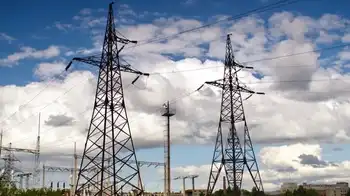Opting for home-grown power
- President Obama has laid out an ambitious agenda for dealing with our energy needs and climate change: he proposes to double the supply of renewable energy within three years, establish a cap-and-trade program to reduce carbon emissions and use federal stimulus dollars to help homes, businesses and governments use energy more efficiently.
This is the right blueprint for increasing the number of green jobs, encouraging economic growth, ensuring that the United States has the energy it needs at reasonable prices, and reducing the risk of global climate change.
But as Congress translates this grand plan into legislation, lawmakers should resist calls to add an extensive and costly new transmission system that would carry electricity from remote areas like Texas, the Great Plains and Eastern Canada to places with high energy demands like Boston, Chicago and New York. This idea is being promoted by energy companies and by elected officials who see it as an economic development opportunity for their particular state or region. Long-distance transmission lines are needed, they argue, to ensure that the presidentÂ’s energy goals are met.
But there are better — and cheaper — ways to get more clean power flowing to the big cities.
Renewable energy resources are found all across the country; they donÂ’t need to be harnessed from just one place. In the Northwest, the largest amount of green power comes from hydroelectricity. In the Northeast, the best source may be the wind over the ocean, because it blows harder and more consistently there than on land. Offshore wind farms have been proposed for Delaware, Massachusetts, New Jersey and Rhode Island. In the Southwest, solar energy can be tapped on a large scale. And in the Southeast, biomass from forests may one day be a major source of sustainable power.
In each area, developing these power sources would be cheaper than piping in clean energy from thousands of miles away.
Unlike our federal highway system, which is needed to transport goods across the country, or the “information superhighway” of the Internet, which is the fastest way to carry information around the world, long-distance transmission lines have no inherent value. On the contrary, the farther electricity is transported, the more of it is dissipated. “Line loss,” as this is called, gobbles up an estimated 2 percent to 3 percent of electricity nationally.
And of course, the longer the power line, the more expensive it is to build. In New England, we estimate the cost per mile at $2 million to $10 million. The closer electricity is generated to where itÂ’s used, the better.
Another component of President Obama’s clean energy vision is the creation of a smarter power grid. But that has little to do with high capacity transmission lines that carry electricity in bulk over hundreds of miles. Building a “smart grid” means upgrading the local grid from a simple delivery system to an information system that can let consumers know the times when power is cheapest, thus enabling them to adjust their use to save money. This flattens out electricity loads and minimizes periods of peak demand. Smart grids will also be able to identify and fix power failures instantly, and someday may even send signals to specific household appliances like thermostats, washing machines and refrigerators to switch them on when demand is low or turn them off during times of peak energy use.
The cost of building transmission lines to connect new power plants to the grid ought to be covered the way we cover it in the Northeast, by folding it into the price of the power that the lines deliver. That allows the market to help keep prices as low as possible.
In Massachusetts, we get about 5 percent of our power from hydroelectric plants in Quebec. Our distribution utilities are negotiating to install a second transmission line for Canadian hydropower, which would be paid for through long-term power-purchase contracts approved by the New England states whose residents use that power. Developers of remote wind-power farms in eastern Canada have said they would also like to sell us electricity, but unless the combined cost of the power they could provide and its transmission is competitive with our other renewable energy choices, their projects wonÂ’t get approved. ThatÂ’s the way it should be.
For a clean energy future, we need a smart grid and we need more renewable energy. The Obama administration is offering welcome support for both. Beyond that, what we need is a level playing field that enables energy providers to compete fairly with one another. The cost of transmission should be incorporated into the overall cost of bringing clean energy to market. Then let the chips fall — and wind turbines rise — where they may.
Related News

Latvia eyes electricity from Belarus nuclear plant
RIGA - Latvia’s electricity transmission system operator, AST, is looking at the possibility of purchasing electricity from the soon-to-be completed Belarusian nuclear power plant in Astravets, long criticised by the Lithuanian government, Belsat TV has reported.
According to the Latvian media, the Latvian government is seeking to mitigate the risk of a possible drop in electricity supplies given that energy trading between the Baltic states and third parties is currently carried out only through the Belarusian-Lithuanian border, including Latvian imports from Lithuania.
If AST starts importing electricity from the Belarusian plant to Latvia, the energy is expected to enter the Lithuanian market…




